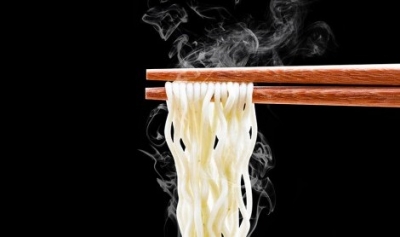
Instant noodles are popular among all age-groups across the globe as they are quick and extremely easy to be prepared.
Birth of instant noodles
In post-Second World War Japan (after1945), food ration was highly limited. People often waited in long queues to buy a bowl of hot ramen (pulled noodles). The Japanese government was given food aid by the U.S. government and this consisted of oil and wheat flour. Therefore, the Japanese officials urged the locals to use these products. Japanese businessman Momofuku Ando saw this as an opportunity and invented the instant noodles. Momofuku used flour, salt and water to make noodles and flash-fried them.
In 1958, the first batch of these dry blocks of noodles was sold for about 35 Yen per piece (in today’s money, that’s about Rs. 350) in supermarkets across Japan. Though they were expensive, they became a huge hit among the working class and students.
This invention is believed to have fuelled Japan’s modern post-war economic rise.
In 1971, Momofuku came up with another important invention – the cup noodles. Following this, instant noodles went global.
Japan most successful invention
Instant noodle is considered one of Japan’s greatest inventions of the 20th Century.
According to a study conducted by the Fuji Research Institute, the Japanese people see instant noodles as the best Japanese invention. Many locals believe that instant noodles represent their country.
Though it was invented in Japan, the largest consumers of instant noodles are the Chinese. Japan stands at the third position with respect to the rate of instant noodle consumption, after Indonesia.
Ever-expanding varieties
One of the most iconic features of instant noodles is that they can be adapted to fit anyone’s taste buds. The traditional ramen noodles consists of wheat noodles served in a tangy, soupy broth and is topped with slices of meat or tofu.
Different countries have their own versions. In Thailand, green curry flavour is a hit. In Mexico, instant noodles are eaten with salsa and a dash of lime juice, and in India, desi masala flavour is a local favourite. Chefs and food experts have been experimenting on newer varieties of noodles. A few quirky types include sweet rose, pizza, ground seaweed, mustard and wasabi noodles.
The cup noodles museum
The cup noodles museum in Osaka, Japan, displays the story of the invention of instant noodles and the growth of this industry.
The museum, opened on November 21, 1999, allows visitors to make their own ramen concoctions and add customised naruto (fish cake) pieces on them. This museum comprises over 5,460 flavour combinations of ramen.
Picture Credit : Google

